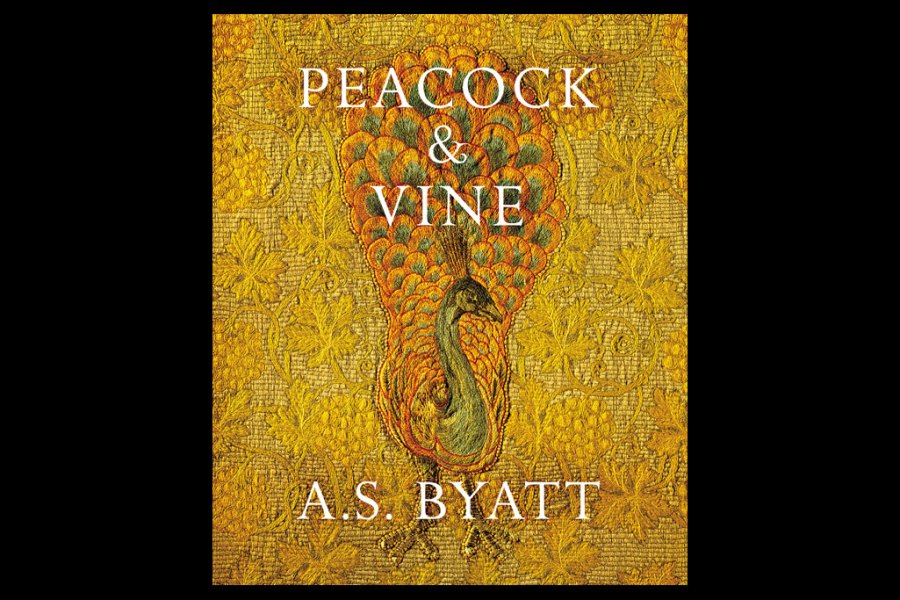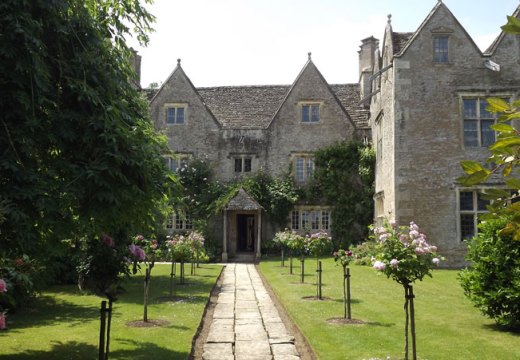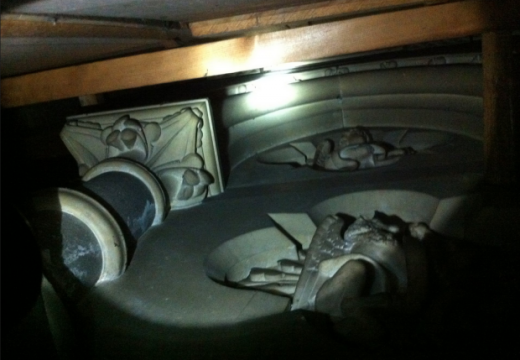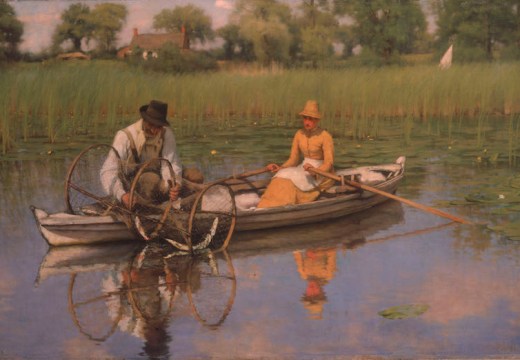The pioneers of the Arts and Crafts Movement promoted a synthesising vision, a philosophy of integration that challenged the distinctions between fine art and craft, family life, and work. A.S. Byatt has consciously applied this unifying principle to an experiment in non-fiction. The result is Peacock & Vine (Chatto & Windus), a fanciful and avowedly personal study of the English designer and socialist William Morris (1834–96) and the Spanish creator of exotic pattern and dress, Mariano Fortuny (1871–1949).
Byatt accounts for the process of writing in similar terms: it starts, she tells us, ‘with a moment of sudden realisation that two things I have been thinking about separately are parts of the same thought, the same work’. Morris and Fortuny represent two such separate parts, sharing neither nationality nor social background, and working several decades apart. Nevertheless, each felt an abiding love for Venice, and it is in relating a visit of her own to Venice that Byatt teases out the affinity between them. Morris’s Venice was that eulogised by Ruskin: a paradise of cities now fallen into aesthetic and moral decline. For Fortuny, by contrast, Venice was a place in which beauty could still be created. He moved there with his aristocratic family in 1889, and 10 years later bought the Palazzo Pesaro degli Orfei, making it his home and centre of operations.
More than a coincidence of location, Venice was the scene in which Fortuny set up a design business organised along lines similar to Morris & Co. Both men believed in unifying the life of the household with the life of the workshop – this included working with their spouses – and both disclaimed the bourgeois distaste for handicraft. Byatt traces further points of similarity in their attitude to historical models in pattern design. Morris drew heavily on Persian and medieval sources, but ruled against imitation. Fortuny was inspired by the discoveries of Arthur Evans in Crete. He and his wife Henriette converted Minoan precedents into statements of high fashion, enlivened by the methods they developed for pleating silk.
Just as Morris and Fortuny challenged distinctions between the traditional and the original, so they also defied the industrial logic of the cheap and the convenient. In each case, a rejection of commercial standards garnered not bankruptcy, but commercial success. A more tangible link between the two men emerges from the claim that Fortuny’s flowing female garments found inspiration in the modes of ‘rational dress’ popularised by Morris and the Pre-Raphaelites. Still, Byatt’s attention dwells more usually on accidental resemblances, on similarities rather than traceable connections. The approach in this respect is impressionistic, and openly so. Byatt is not pursuing a research question, but a sensation and a scheme of colour.
She explains that an ‘odd thing’ happened to her in Venice: ‘Every time I closed my eyes […] I saw a very English green […] and the dense green light in English woods.’ This moment of sensory interference offers a perceptual and structural principle for her loosely assembled mosaic of material. Byatt’s serendipitous readings work best in the purely visual field of pattern, the area in which Morris and Fortuny had most in common. Here, her imagination and verbal dexterity run at their freest, and it is here that her observations are genuinely original. She deftly draws out the principles of ‘order’ that guaranteed the patterned ‘riot’ of Morris’s natural scenes, and offers astute observations on the difficulties he faced in rendering a human or animal presence amid the flow of vegetation. All the while, Byatt stitches together this late Victorian material with Fortuny’s adventures in haute couture, and even theatre lighting, through her attention to the recurring figure of the peacock.
But Byatt’s reverie is rarely so free or enchanted that it avoids the well-worn paths of existing scholarship. And no impressionistic tour de force emerges to compensate for the limitations of the work as intellectual biography. Too often, we are left wondering what Byatt is bringing to the table. The precedent of her Victorianist fiction, in particular her novel of Arts and Crafts life, The Children’s Book (2009), augurs well, yet here she seems out of her element. Byatt is courteous in acknowledging her debts – and the same courtesy inhibits her creative energy. She rightly mentions Fiona MacCarthy’s excellent biography of Morris, yet relies on this one source too many times to sustain vision. The book’s professed subjectivism offers some defence, but also poses a question of method and genre. In the absence of a more developed fictive framework, long passages of survey and summary run perilously close to paraphrase.
A contrived passivity aggravates these tonal issues. When Byatt admits of the bird in Morris’s early ‘If I Can’ hanging that ‘I am not sure, looking at the reproduction, whether it has an eye’, we might be forgiven for wondering why she hasn’t checked the fact of the matter against the original. There are reputable literary precedents for this kind of complacency, but the special warrant requires that you pay the fare in other ways.
Byatt is open about having stuck together the two parts of this book – a photograph on the last page shows her sitting on a museum bench holding a reel of sticky tape. This enables her to uncover some suggestive affinities between Morris and Fortuny. Unfortunately, the result is too close to biography to license so much that feels second-hand and too remote from the elaborate conceits of her fiction to harness what Byatt the novelist does best.
From the September issue of Apollo: preview and subscribe here.
Unlimited access from just $16 every 3 months
Subscribe to get unlimited and exclusive access to the top art stories, interviews and exhibition reviews.














![Masterpiece [Re]discovery 2022. Photo: Ben Fisher Photography, courtesy of Masterpiece London](http://www.apollo-magazine.com/wp-content/uploads/2022/07/MPL2022_4263.jpg)
It’s time for the government of London to return to its rightful home